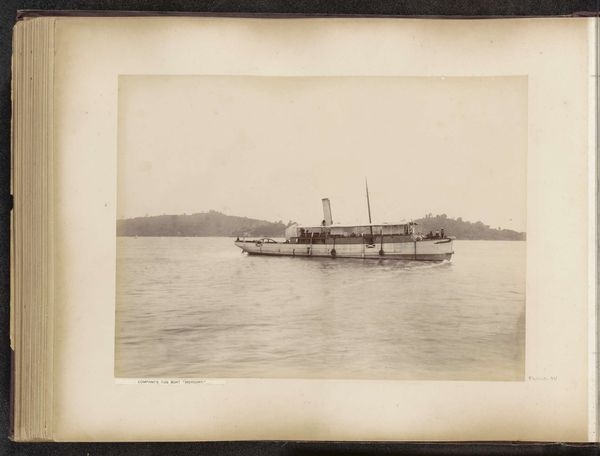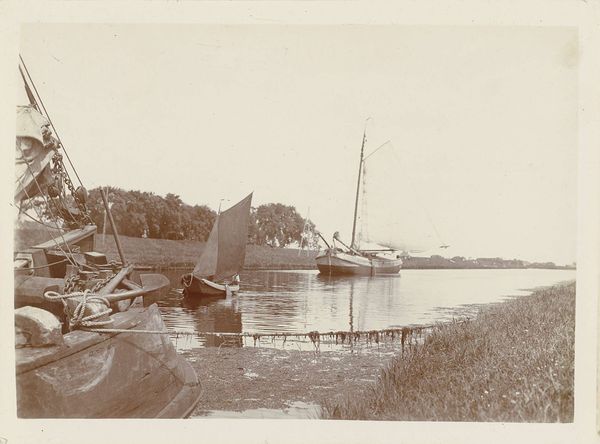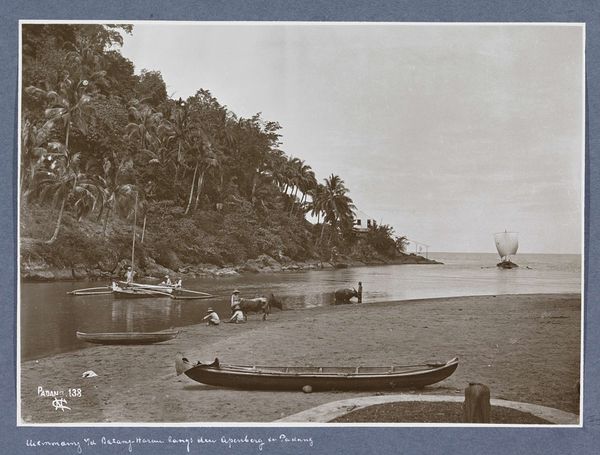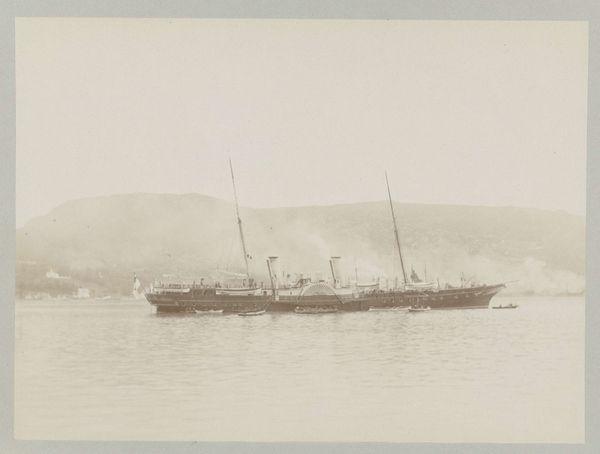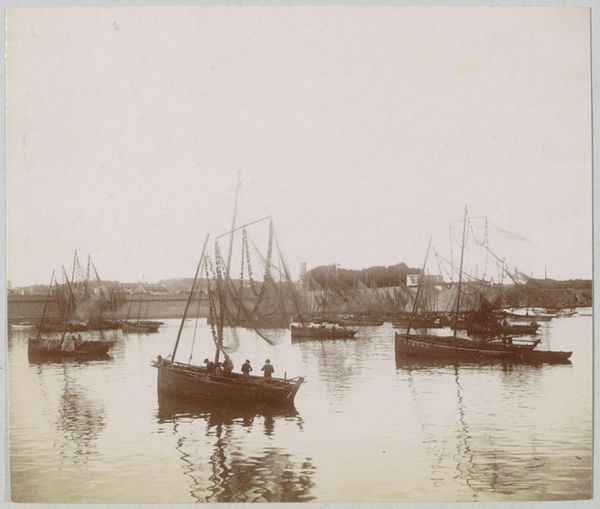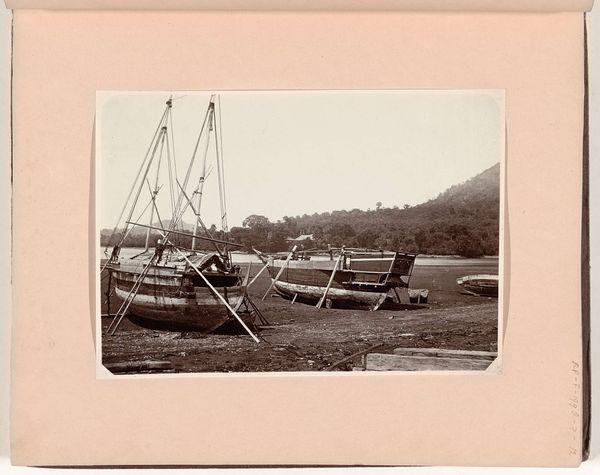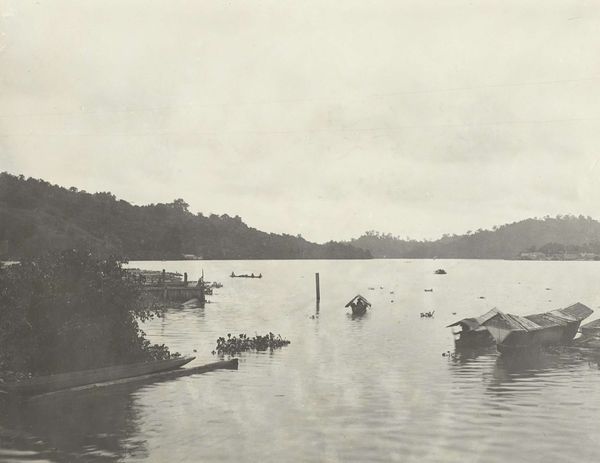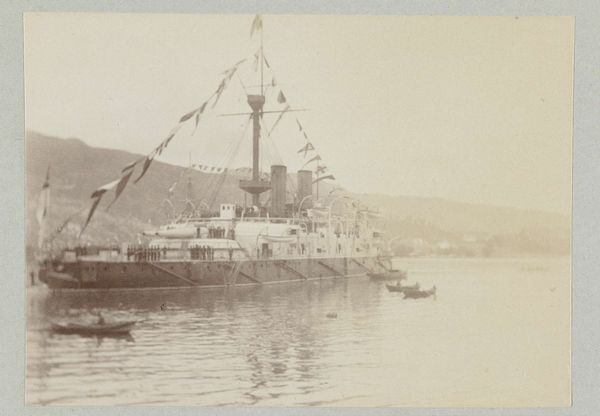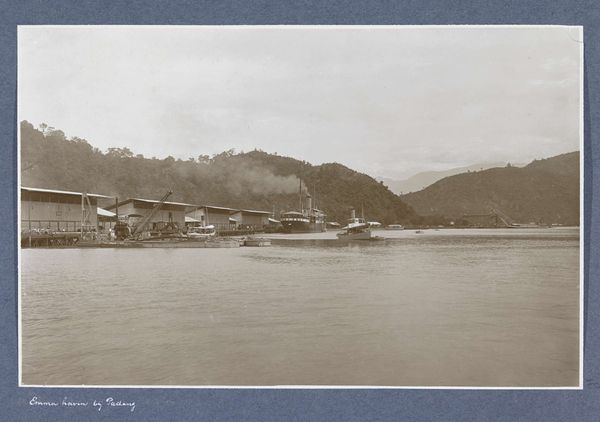
photography, gelatin-silver-print
#
landscape
#
outdoor photography
#
photography
#
scenic photography
#
gelatin-silver-print
Dimensions: height 84 mm, width 57 mm
Copyright: Rijks Museum: Open Domain
Editor: Here we have Johanna Hermina Marmelstein’s gelatin silver print, "Een aangemeerde grote stoomboot," which translates to "A Moored Large Steamboat," dating from sometime between 1900 and 1915. It's quite a serene image, almost dreamlike in its soft focus. How do you interpret this work? Curator: The steamboat, caught between departures and arrivals, really anchors our understanding to colonial infrastructures of that time. Where was this boat coming from, and who benefitted from it? The very stillness of the scene belies the movement, the exploitation of both labor and resources these boats represent. Do you see the landscape almost hugging the water there? Editor: Yes, the foliage is quite lush! I suppose I was drawn in by the aesthetic qualities, overlooking its socio-political context. Curator: Right, the soft, almost romantic quality draws us in, obscuring some realities. Consider how notions of “picturesque” landscapes were often deployed to mask unequal power dynamics. Marmelstein, as a photographer working during this period, perhaps unintentionally captured the ambiguities of progress and exploitation. What do you make of the seemingly untouched quality of the location itself? Editor: That's interesting… It seems almost untouched, unspoiled. Is it ironic to think the picture is actually a representation of destroyed land due to the environmental costs of steam power and boats of this type? Curator: Exactly! The absence of obvious markers of industrialization can be read as a kind of visual denial. By focusing on the tranquil beauty of the scene, she may have inadvertently masked the less savory realities of colonialism. It challenges us to consider what is present but unseen, and what the artist chooses to show or omit. Editor: I see what you mean now. It gives a lot to think about, especially when viewing seemingly "peaceful" or "simple" landscape photos from that period. Curator: Precisely. Let’s challenge ourselves to delve into such cultural landscapes. It is in so doing that we may foster awareness regarding environmental damage that has long been hidden.
Comments
No comments
Be the first to comment and join the conversation on the ultimate creative platform.
